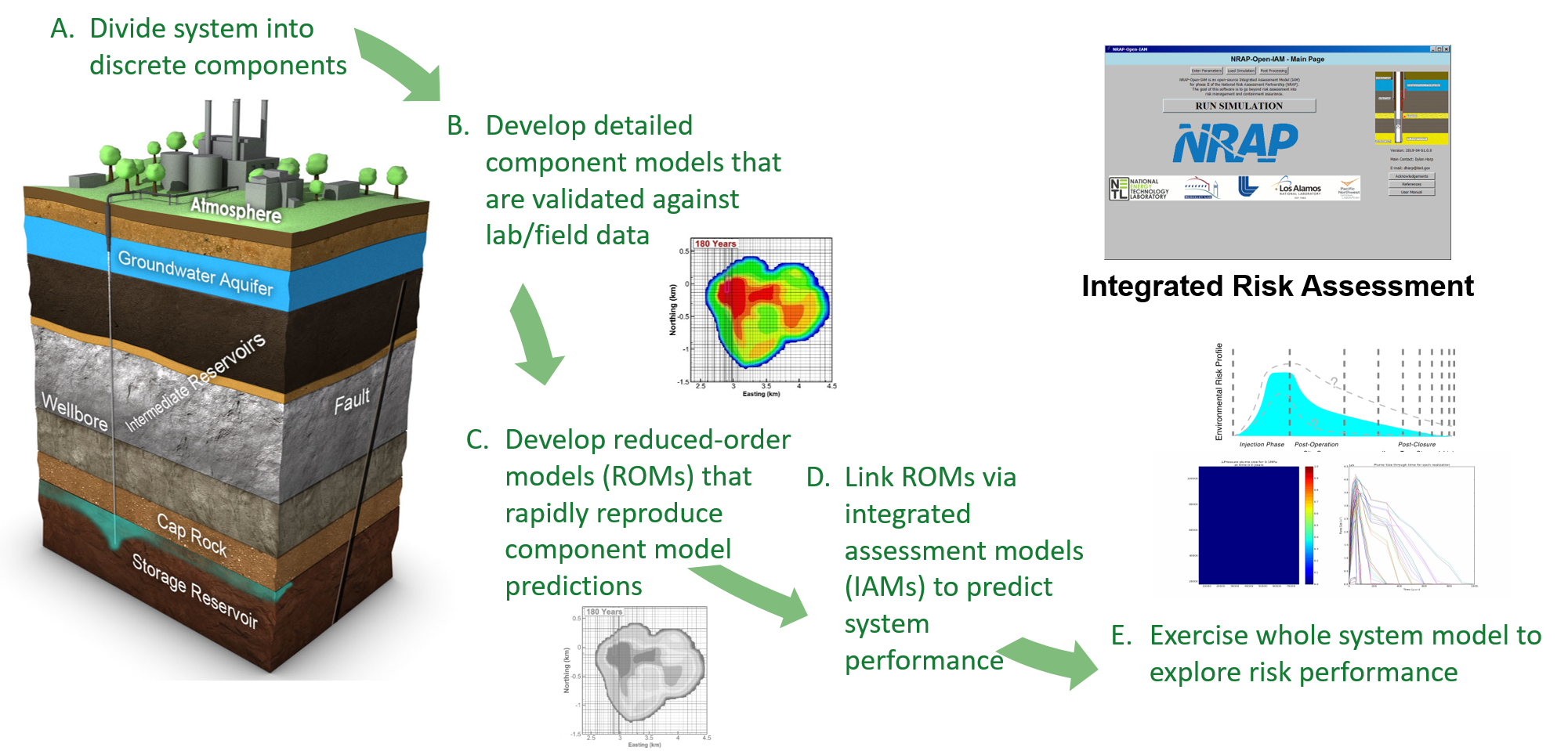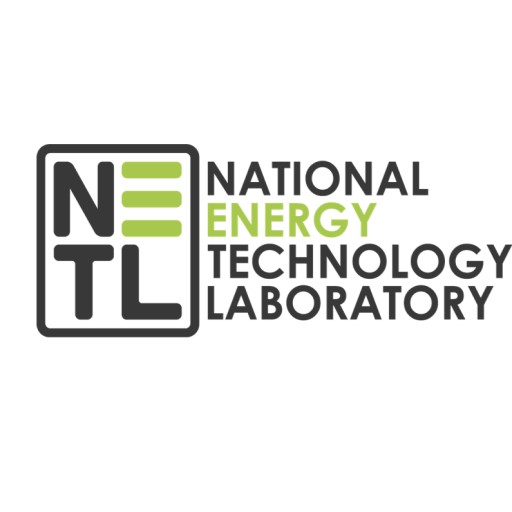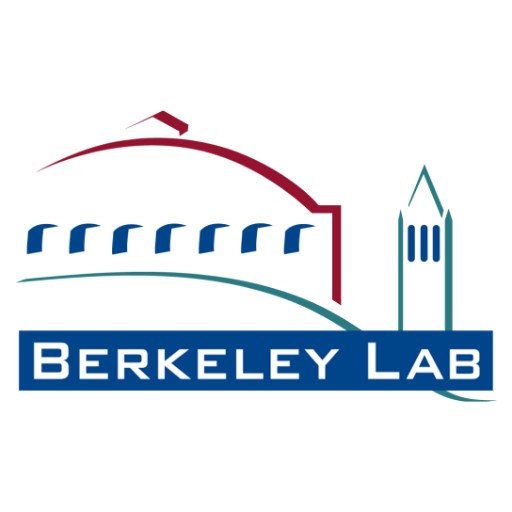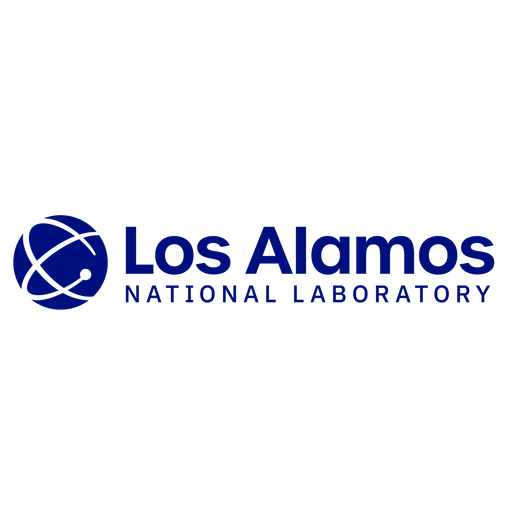NRAP Approach
NRAP addresses the challenge of simulating the physical response of a geologic carbon storage (GCS) site to large-scale injection and storage over time. Computational modeling of the engineered geologic system using a single coupled high-fidelity model is computationally intensive, and stochastic modeling for full uncertainty quantification using this approach would be computationally intractable. To address this, NRAP uses a variety of reduced-order modeling approaches to enable fast prediction of important system component behaviors and couples those in an integrated assessment framework to enable forecasting and uncertainty quantification of the full system behavior.
This research uses various fit-for-purpose computational approaches to enable rapid and credible characterization of important system attributes and behavior over time. NRAP also applies novel modeling of monitoring performance, including full-physics and data-driven inversion of geophysical data, to design site monitoring and evaluate leakage detectability, and statistical approaches to constrain uncertainties in system performance using observational information.
Many of these methods are embodied in open-source computational tools and related workflows that are being publicly released in support of quantitative risk assessment, are tested and validated through field demonstration and simulation benchmark exercises. These tools can be applied to constrain uncertainties, to improve understanding of important system behavior, and support stakeholder decisions.






